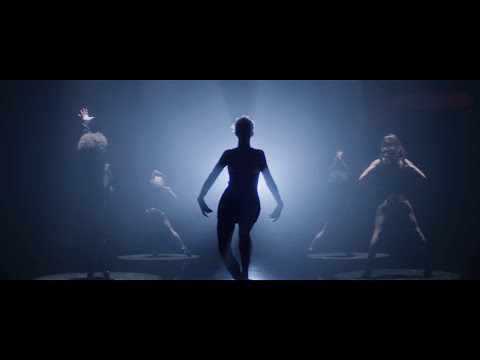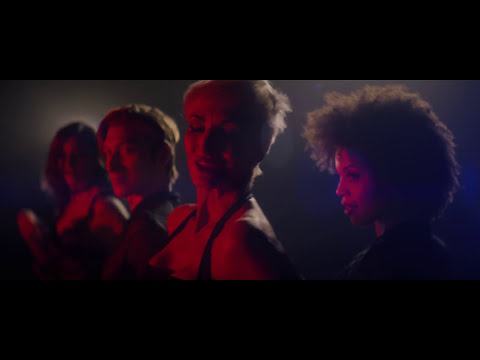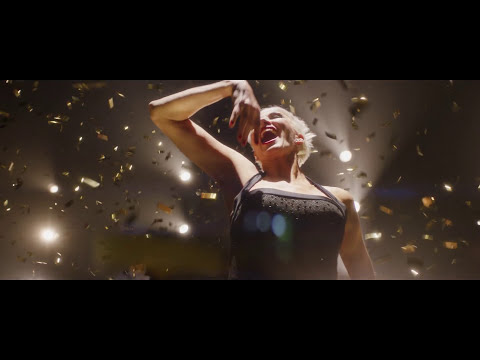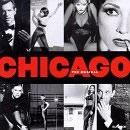Overture / All That Jazz Lyrics
Overture / All That Jazz
[Overture][ANNOUNCER]
Welcome. Ladies and Gentlemen, you are about to see a story of
murder, greed, corruption, violence, exploitation, adultery,
and treachery - all those things we all hold near and dear to
our hearts. Thank you!
(Instrumental)
[All That Jazz]
[Velma:]
Come on, Babe
Why don't we paint the town?
And All That Jazz
I'm gonna rouge my knees
And roll my stockings down
And All That Jazz.
Start the car
I know a whoopee spot
Where the gin is cold
But the piano's hot
It's just a noisy hall
Where there's a nightly brawl
And All
That
Jazz!
[Dance break]
Slick your hair
And wear your buckle shoes
And All That Jazz!
I hear that Father Dip
Is gonna blow the blues
And All That Jazz
Hold on, hon
We're gonna bunny hug
I bought some Aspirin
Down at United Drug
In case you shake apart
And want a brand-new start
To do that -
Velma & Company:
Jazz!
Company:
Skidoo!
Velma:
And All That Jazz
Company:
Hotcha!
Whoopee!
Velma:
And All That Jazz
Company:
Hah! Hah! Hah!
Velma:
It's just a noisy hall
Where there's a nightly brawl
All:
And all that Jazz
(Fred Casely and Roxie Hart enter)
Fred:
Listen, your husband ain't home, is he?
Velma:
No, her husband is not at home!
Find a flask
We're playing fast and loose
Company:
And All That Jazz!
Velma:
Right up here
Is where I store the juice
Company:
And All That Jazz!
Velma:
Come on babe
We're gonna brush the sky
I bet you lucky Lindy
Never flew so high
'Cause in the stratosphere
How could he lend an ear
To All That Jazz
Company:
Oh, you're gonna see her sheba shimmy shake
Velma:
And All That Jazz!
Company:
Oh, she's gonna shimmy till her garters break
Velma:
And All That Jazz
Company:
Show her where to park her girdle
Oh, her mother's blood is curdle
If she'd hear
Her baby's queer
For All That Jazz!
Velma: Company:
And All That Jazz!
Come on, Babe Oh, you're gonna see
Why don't we paint your
The town? Sheba
And All That Jazz Shimmy shake
And All That Jazz!
I'm gonna Oh,
Rouge my knees. She's gonna shimmy
And roll my 'Till her garters
Stockings down Break
And All That Jazz And All That Jazz
Start the car, show her where to
I know a whoopee spot, Park her girdle
Where the gin is col,d Oh, her mother's blood'd
But the piano's hot. Curdle
It's just a noisy hall. If she'd hear
Where there's a nightly brawl Her baby's queer
And All That Jazz! For All That Jazz!
Roxie:
So, that's it, huh, Fred?
Fred:
Yeah, I'm afraid so, Roxie.
Roxie:
Oh, Fred...
Girls:
Oh, Fred...
Fred:
Yeah?
Roxie:
Nobody walks out on me.
(Roxie shoots him.)
Fred:
Sweetheart -
Roxie:
Oh, don't "sweetheart" me, you son-of-a-bitch!
(Roxie shoots him again. Fred dies.)
Company:
Hotcha!
Whoopee!
Jazz!
Roxie:
Oh, I gotta pee.
(Roxie exits.)
Velma:
No, I'm no one's wife
But, oh, I love my life
And All That Jazz!
Company:
That Jazz!
Song Overview

Song Credits
- Producers: Phil Ramone, Martin Richards, Joseph Harris, Ira Bernstein, Didier C. Deutsch
- Composers: Fred Ebb & John Kander
- Conductor: Stan Lebowsky
- Arranger: Peter Howard
- Orchestration: Ralph Burns
- Release Date: 1975
- Genre: Broadway, Jazz, Big Band
- Album: Chicago: A Musical Vaudeville (Original Broadway Cast)
- Language: English
- Track #: 2
Song Meaning and Annotations

Unveiling the Layers of “All That Jazz” by Chita Rivera
The iconic number “All That Jazz” from the musical Chicago isn't merely a catchy tune; it's a vibrant tapestry woven with threads of 1920s culture, slang, and societal nuances. Chita Rivera's rendition encapsulates the spirit of an era marked by exuberance and rebellion.
The phrase “paint the town red” epitomizes the wild escapades of the Roaring Twenties. While some trace their origins to bonfires illuminating the night sky, others point to an 1837 incident involving the Marquis of Waterford, who, in a drunken spree, painted buildings red. The term evolved to symbolize uninhibited revelry, a theme central to the song's narrative.
Flappers, the emblematic women of the 1920s, challenged conventions with their fashion choices. They would “rouge their knees”, applying blush to draw attention to their legs, a bold statement in an era of changing norms. Rolling down stockings and forgoing garters further accentuated their defiance and desire for freedom.
The line “Slick your hair and wear your buckle shoes” references the popular Mary Janes and T-strap shoes of the time, often adorned with buckles. These shoes were not just fashion statements but also practical choices for dancing the night away.
Mention of “Father Dip” alludes to Louis Armstrong, affectionately nicknamed by fellow musicians. His influence on jazz was profound, and his presence in the song underscores the genre's significance in the cultural landscape of the 1920s.
The “Bunny Hug”, a dance craze of the early 1900s, was both a song and a dance that stirred controversy due to its suggestive movements. Performed by comedian John Bunny in a 1913 film, it exemplified the era's penchant for blending entertainment with provocation.
In a clever play on words, “aspirin” in the song serves as a euphemism for condoms, reflecting the discreet ways people addressed topics of sexuality during that period. Drugstores often used such code words to navigate societal taboos.
The “shimmy”, a dance move characterized by rapid shoulder movements, became synonymous with the flapper's liberated spirit. Its popularity in the 1920s, often performed to ragtime music, symbolized a break from traditional dance forms.
The term “girdle” refers to a corset-like garment designed to shape the waist. By the First World War, innovations led to stretch girdles made with rubberized elastic, offering women more comfort and mobility, aligning with the decade's progressive attitudes.
The song's backdrop is enriched by real-life events, notably the 1924 case of Beulah Annan, who inspired the character Roxie Hart. Annan's trial, marked by sensationalism and themes of female agency, mirrored the complexities of the era's gender dynamics.
Lastly, the mention of “Lucky Lindy” pays homage to Charles Lindbergh, who, in 1927, completed the first solo transatlantic flight. His achievement epitomized the decade's spirit of innovation and daring.
In essence, “All That Jazz” is more than a song; it's a cultural mosaic capturing the essence of a transformative era, blending historical references with musical flair to celebrate the audacious spirit of the 1920s.
Velma’s Swaggering Overture to Sin, Sequins, and Self
“All That Jazz” doesn’t just open the musical *Chicago* — it kicks the damn door in. With Chita Rivera channeling a Broadway femme fatale as Velma Kelly, the song explodes with razzle-dazzle bravado. The verses read like an invitation to a night you probably won’t survive, but hey, you’ll look great doing it.Come on babe / Why don't we paint the town? / And all that jazzThis isn't just nightlife. It’s defiance disguised in feather boas and eyeliner. Velma isn't suggesting — she’s *commanding*. The “all that jazz” refrain becomes a catchall for vices, glamour, grit, and freedom — a phrase that lets you fill in your own poison.
I'm gonna rouge my knees / And roll my stockings downIt’s more than risqué. This was scandalous in the 1920s setting of *Chicago*. It signaled rebellion, femininity weaponized, and a thirst for indulgence. And as we soon learn, it's the prelude to a double homicide. Yes — Velma sings this moments after murdering her cheating husband and sister. The spoken asides and interruptions – like:
[ROXIE, spoken] Oh, I gotta pee!– Break the fourth wall and let *Chicago* wink at its audience. The murder, the media circus, the absurdity — it’s all showbiz.
Oh, her mother's blood'd curdle / If she'd hear her baby's queerLines like these pack a twisted punch. It's cheeky, campy, and sharply aware of social taboos — flaunting them like rhinestones on a corset.
No, I'm no one's wife but / Oh, I love my life and all that jazz!By the end, Velma is triumphantly solo. No apologies, no attachments — just rhythm, ruthlessness, and the spotlights. It's liberation dressed up in syncopation.
Similar Songs

- "Mein Herr" – Liza Minnelli (*Cabaret*)
Like “All That Jazz,” this is a powerhouse number where a woman ditches her man with high-kick flair. Both songs layer seduction with subversion, using burlesque tones to hide a raw defiance under the glitter. - "Whatever Lola Wants" – Gwen Verdon (*Damn Yankees*)
Another smoky number with a sultry protagonist. Lola and Velma both control the scene, using sexuality as spectacle and strategy. They’re magnetic but never submissive — always the player, never the pawn. - "You Can't Stop the Beat" – *Hairspray* (Original Broadway Cast)
This one’s more optimistic, but its chaotic energy and ensemble dynamism echo the kinetic pulse of “All That Jazz.” Both close their respective acts with a bang — jazz hands on steroids.
Questions and Answers

- What is “All That Jazz” actually about?
- It’s a sultry showtune celebrating nightlife, vice, and jazz-era rebellion — while subtly setting the stage for the show’s central crimes and themes of fame, deception, and survival.
- Why is this song important in *Chicago*?
- It introduces the tone of the entire musical — glamorous but cynical, charming yet violent. It also reveals Velma's character: confident, cunning, and completely unapologetic.
- Is Chita Rivera the original performer of “All That Jazz”?
- No, Chita performed it later. The original Broadway Velma was Gwen Verdon, but Chita’s version is iconic, especially for its sultry interpretation and showmanship.
- What does “rouge my knees” mean?
- It refers to a flapper-era fashion where women would apply makeup to their knees — a flirtatious act that emphasized their independence and sexuality.
- How does “All That Jazz” blend music and theatre?
- With vaudeville rhythms, a jazz-band orchestration, and brassy vocals, it marries sound and spectacle seamlessly. It's a song built to dazzle — and to hint at the darkness behind the dazzle.
Fan and Media Reactions
"When Chita sings this, it’s like watching someone make love to the spotlight. Total control, pure fire." — BroadwayNights
"‘All That Jazz’ never misses. The attitude, the swing, the danger — it’s everything a musical opener should be." — JazzHandsDaily
"Velma’s got murder on her mind and syncopation in her soul. Iconic." — TheatreCritiqueNow
"I want to strut into every Monday morning like Chita does this number." — YouTube User: TapQueen1992
"The horns, the sass, the murder... Broadway really knows how to kick things off." — Commenter: DarkStageDoor
